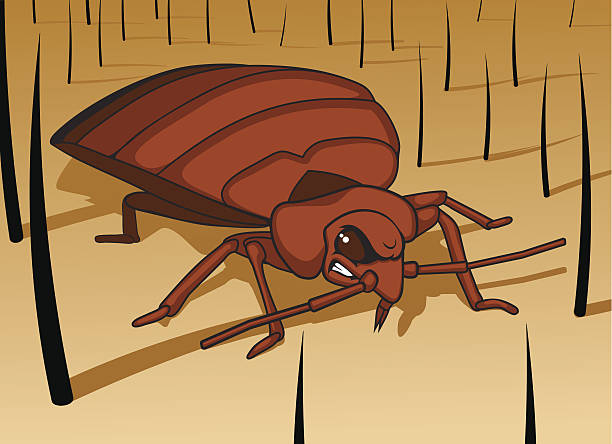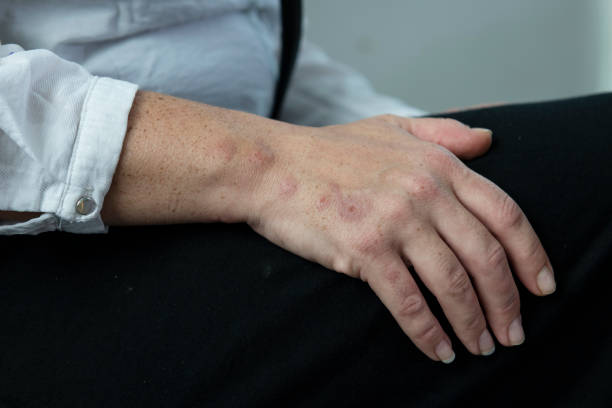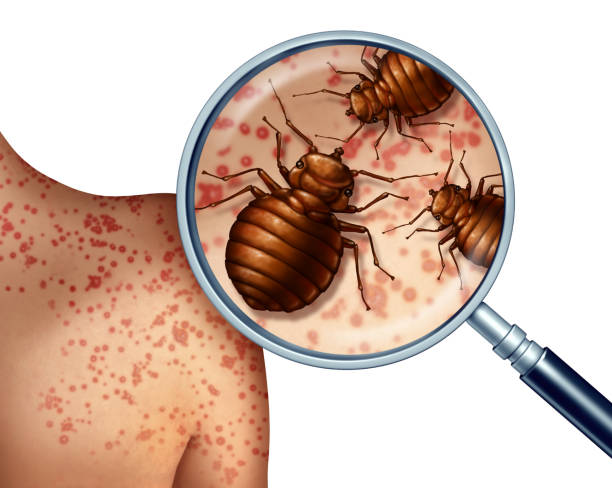For many people, visiting a hotel or another accommodation means coming home with bed bugs and other insects. When these bugs get to your home, they begin to feed on you; they multiply and cause severe infestation if not cautioned. Bed bugs are small, flat insects with six legs, two antennae, and 11 segments. Their flattened bodies enable them to hide under beds, furniture, behind wallpaper, and sometimes inside electrical outlets! Unlike traditional arthropods, they don't have hard exoskeletons.
Bites from bed bugs can be itchy and irritating, so a quick remedy might be required. While it might seem as though your first line of defence is to cover up, some quick research can reveal that a bed bug bite does not mean that you have to treat your entire body with itchy cream.
While many people will choose to stick to these methods, it is undoubtedly possible to cure yourself of a bed bug bite and prevent future bites from occurring.
Click here for posts on how to avoid bed bug bites.
Bed bugs are often mistaken for lice or fleas because they look similar. But unlike those creatures, bed bugs don't just bite humans—they bite to feed on the host's blood. Bed bug bites appear as red bumps that may itch intensely after being bitten. Most people who experience these bites find them uncomfortable at best and highly frustrating at worst.
Do bed bugs stick to your skin?

Even though bed bugs feed on human blood by piercing the skin with their proboscis, this operation often lasts about 3 to 15 minutes, leaving you and returning to their hiding. Studies have revealed that bedbugs cannot survive for long at temperatures above 32 degrees Celsius. Since the average human body temperature is about 37-degree Celsius, this makes it unsuitable for bed bugs to thrive for long, as they are often repelled by the heat produced. Unlike ticks with needle-like mouthparts and sticky foldable pads, which contain resilin to allow them to stick to your body. As a result, they can stay on you for about 3 to 5 days and even months in animals with fur. Bed bugs do not possess these characteristics, and as such, they can't survive long by sticking to human skin.
A report by the national centre for biotechnology information also revealed a study which showed that "Adult bed bugs exposed to a temperature of 45 degrees Celsius had only 94.8 minutes to survive. However, their eggs can survive up to 7 hours under the same condition."
How to treat bedbugs Bites

The first step in treating bed bug bites is to wash your hands thoroughly before touching any of your skin. If you're unsure whether you've been exposed to bedbugs, try checking your bedding and clothes carefully. Look for blood-filled eggs, droppings, or adult bed bugs.
Next, apply antihistamines such as Benadryl to relieve itching and discomfort. Avoid using topical steroids or creams until you consult your doctor. Steroids could cause long-term side effects, including thinning hair and acne breakouts.
If the bites persist and become infected, seek medical attention. Your doctor will likely recommend prescription medication such as antibiotics to kill off bacteria that may be causing the infection. A combination of oral and topical medications is usually prescribed but always check with your doctor if you notice any unusual symptoms.
What to Look for When it comes to identification

It is important to note that it is far better to get a bit once than repeatedly. After that, treating your body so you no longer have to deal with insect bites is possible, but you need to start by identifying and treating the source.
Some easy ways to identify bites are as follows:
- When taking a shower, looking for red, itchy bumps on the skin is essential.
- Look at your ankles or other areas where the skin tends to be thinner.
- If you are itching the spot where you are bitten, this can suggest the possible presence of a bed bug bite.
FAQs
Where do bed bugs hide in your body?
Bed bugs don't live or hide on any part of your body; they can feed on any part of your body from your face, arms, legs, ankles and so on.
Do bed bugs live in your ear?
Bed bugs cannot live in your ear. However, there are cases when bed bugs can be found in your ear, especially when they are at the nymph stage of their life cycle.
Check out our post about bed bugs living in your ear.
How do you tell if bed bugs are around?
You can look for signs like dark spots and blood stains on your bedsheet or furniture. At times, they give off an odour similar to sweet berries.
Can bed bugs lay eggs on human skin?
The simple answer is "NO," as they cannot burrow through your skin. They are somewhat more suckers than burrowers. They lay their eggs in dark places and cracks in your furniture or spaces within the foam of your mattress.
Can you see a bed bug on your mattress?
Yes! You spend most of your time on your sleep mattress while you sleep. However, bedbugs will always find their way to access their host! So expect them on your bed if you don't take the necessary measures to get rid of them.
